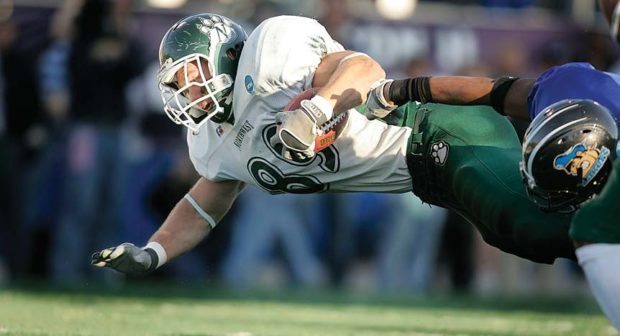Athletes who want to be successful in their chosen sports should not take a casual approach to their speed, agility and quickness training programs. Renowned kinesiology professor Lee Brown says athletes should have enough of a strength base to adequately complete each exercise without undue strain, using the training as a supplement to traditional resistance training.
In other words, it should be conducted in addition to -— and not instead of -— lifting weights.
In the third edition of the best-selling book for which he serves as editor, Training for Speed, Agility, & Quickness (Human Kinetics, December 2014), Brown stresses that exercise programs for athletes need to take several parameters into consideration, such as years of training, level of fitness, and how often speed, agility, and quickness training will be performed.
In addition to these concerns, he points to seven critical training variables athletes at all training levels should discuss with their coaches: choice, order, frequency, intensity, volume, rest and progression:
Source: Link to original article in AFCA.
1. Choice of exercise for a training program should mimic the athlete’s demands during competition.
Exercises should be specific to the sport relative to direction of movement, velocity of movement, muscles used and metabolic demands of the sport. Most important, every program must be designed with a specific goal in mind.
2. Order of exercise should follow three main patterns: simple to complex, low to high intensity, and general to sport specific.
Brown says ordering the exercises in this manner allows an athlete to gradually prepare to perform complex, intense and specific movements.
3. Frequency of training refers to the number of training sessions completed in a given time, usually per week.
Frequency should be altered according to the ability level of the athlete and where he is in a training program.
“It is important that athletes begin with the basic techniques of each exercise before advancing to more technical aspects,” Brown says. “Furthermore, learning proper mechanics of basic exercises will allow the athlete to progress to advanced exercises in a timelier manner.”
4. Intensity applies to the quality of work performed during muscular activity and is measured in terms of power output (i.e., work performed per unit of time).
Training intensity may also be defined by the ease or difficulty of a particular drill and be altered based on the velocity of movement, whether or not the movements are planned or unplanned, and the degree of angle for the movement.
5. Volume is the quantity — or total number — of sets and repetitions completed in a training session.
The inverse relationship between intensity and volume states that as intensity increases, volume decreases. Early in the program, volume is high while intensity is low. As the athlete nears competition, volume is progressively decreased as intensity increases. When it comes to assessing training progression, measuring training volume (number of sets times number of repetitions) is vital.
6. Rest is often the forgotten variable. Rest prevents overtraining and is critical to the success of a training program.
The progression of a training program must include rest in order to maximize training adaptations that are specific to each sport.
7. Progression of the program should gradually increase as athletes reach their goals.
“Intensity should progress from low to moderate until movements are mastered, followed by a decrease in volume as the intensity increases,” Brown says. “Progression from low to high intensity may depend on where the athlete is in his training year.”
He says low intensity may consist of performing the exercises at 40 to 50 percent of maximal exertion, moderate intensity at 50 to 80 percent, and high intensity at 80 to 100 percent.
Brown also says each critical training variable should be manipulated according to the athlete’s level of training, dividing athletes into three major categories: novice, experienced, and advanced.
With novice athletes, the potential for improvement is great. Experienced athletes have been training for 1-5 years and compete at a higher level, but there is still great room for improvement. Advanced athletes, meanwhile, compete at a national or international level, where events are decided by inches or hundredths of a second. Because their potential for improvement is small, the details of their programs must be precise.
As the most effective resource for building the movement skills to excel in any sport, the first two editions of Training for Speed, Agility, & Quickness have sold more than 100,000 copies. The third edition includes new drills, bringing the total to more than 200. The most dynamic and complex drills are housed in an online video library, giving readers exclusive access to streaming video of demonstrations that ensure the drills and exercises are being performed with proper technique.
For more information on the third edition of Training for Speed, Agility, & Quickness or other strength and conditioning books and resources, visit HumanKinetics.com.

